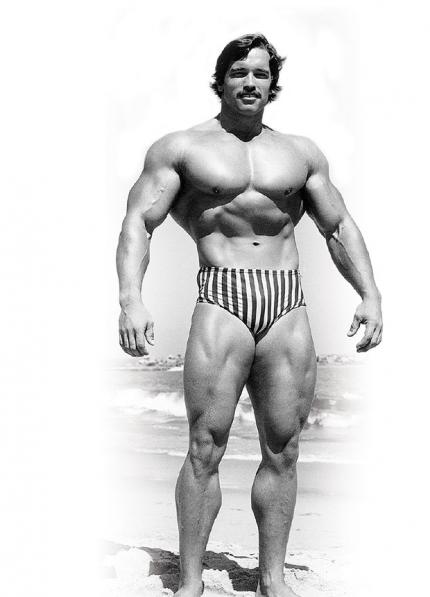Ask the Scientist

Jeff Golini is the owner of All American Pharmaceuticals and EFX Sports. He is a former competitive bodybuilder based in Venice Beach, but he’s also been in the supplement industry as a formulator, patent creator and manufacturer since the 80s. He has a PhD, and lives in Montana where he owns and runs a supplement factory. Jeff’s most famous for coming up with the idea of adding acid buffering ingredients to creatine monohydrate to help ease the damage the stomach acids have on the creatine you consume. This novel idea has created a massive following of buffered creatine users all over the world! Facebook. Instagram, YouTube

Supplementing in the 1970s
From disco dancing to bell-bottom jeans, much has changed since the 1970s; that includes supplementation. Bodybuilders didn’t have all the luxuries we have at our disposal today. Just think about all the sports nutrition companies and the equivalent number of different sports nutrition products available today. Instead, bodybuilders such as Arnold Schwarzenegger had to use whole foods for their nutrition and performance enhancement.
A high-protein, low-carbohydrate diet was most popular among bodybuilders of their era. Their diet consisted of protein from chicken breasts, steaks and hamburgers, fish, ham, milk, cheese, and cottage cheese. Bodybuilders would keep their carbs low while using the fats from meats and dairy as their major energy source.
Because of the lack of nutritional science in the 1970s, bodybuilders paid little attention, if any, to their overall macro and calorie intake. Remember, most foods at that time didn’t have to list nutrition facts, much less additives. Therefore, it was more difficult for them to know exactly how much, gram for gram and calorie for calorie, they were actually eating.
To give you an idea of what a ‘70s-era bodybuilder might eat, here’s one of Arnold’s typical meal plans:
Morning:
Cheese omelet
Hamburger patty
Cottage cheese
Coffee
Lunch:
Beef patty
Eggs
Cottage cheese
Dinner:
Steak or chicken
Cottage cheese
Salad or baked potato
Between Meals:
Rheo Blair Protein
Sunday was “cheat day,” when Arnold would consume whatever he desired (e.g., pizza, ice cream, etc.).
Actual dietary supplements as we know them today, were very sparse and only just emerging. Liver pills and basic protein products virtually defined the bulk of supplements choices available. In fact, you could only find a few companies selling amino acid pills, which were nothing more than predigested proteins from gelatin and soy, along with desiccated liver tablets.
Multivitamin tablets were available at local health food stores or by mail order. One of the first and most popular on the market was a vitamin-mineral tablet promoted through the Jowett-Rebhuhn/American Bodybuilding Club mail-order course. Joe Weider and Bob Hoffman came out with Hi-Protein tablets, powder (soy), and wheat germ oil.
It wasn’t until the late 1960s that Rheo Blair Protein caught on in Venice Beach, California. At first, Blair’s powder was derived from soy protein. But, later it was reformulated to contain calcium and sodium caseinate (derived from nonfat milk, dried egg whites, and dried whole eggs) along with some iron phosphate and natural vanilla flavour.

Blair’s protein formula was originally sweetened with cyclamate, which was later banned by the FDA and declared a carcinogen. The product was unsweetened for a short time, but fructose was later added to improve its flavour. Even though Blair’s protein was quite expensive, bodybuilders such as Arnold, Frank Zane, and Larry Scott loved it.
The 1970s also saw the introduction of Joe Weider’s famous Crash Weight Gain Powder (which was full of sugar and carbs), and Hoffman’s Protein from the Sea, which tasted so bad you could hardly choke it down! In fact, one lifter reported that “... It smelled like dead fish and tasted even worse.”
Supplements such as whey protein, pre-workout formulas, and creatine wouldn’t hit the market for at least another decade. That’s why it’s amazing to me how bodybuilders from this time were still able to build such beautiful and impressive physiques.
For more info on how Arnold and his buddies trained and dieting in the 70's, check out Mark Gilbert's article here!

